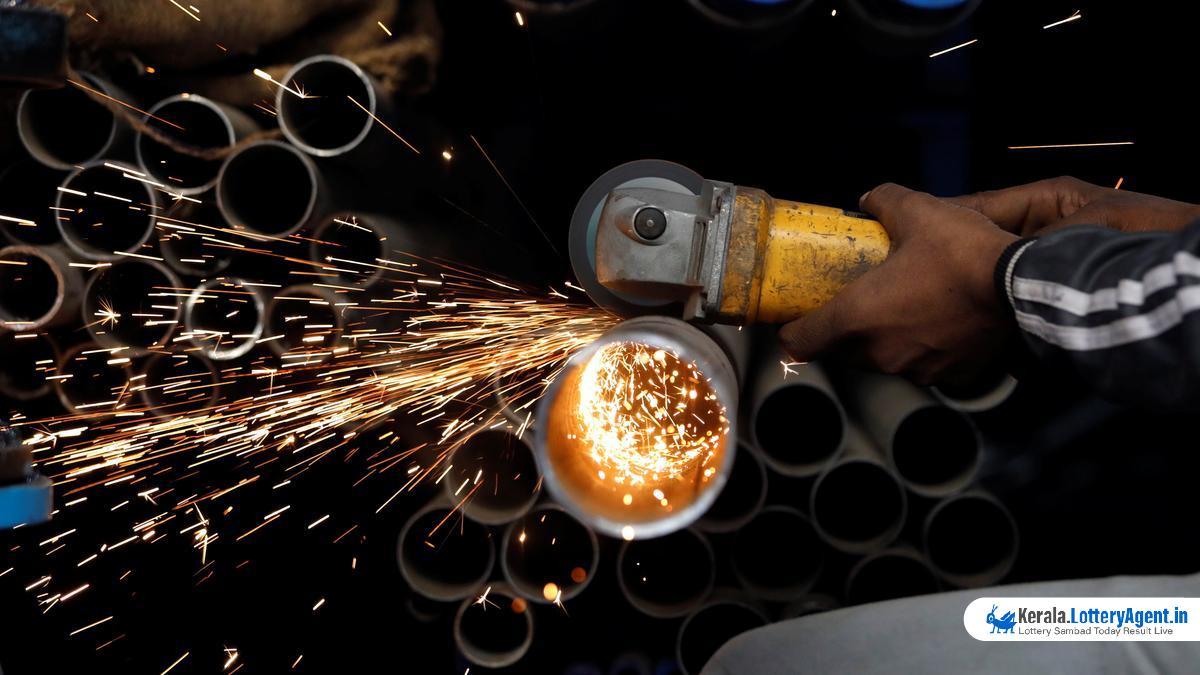
The performance of India’s manufacturing sector in April showed a slight deceleration but maintained robust growth momentum, marking the second-best improvement in its operating conditions in over three years, according to the seasonally adjusted HSBC India Manufacturing Purchasing Managers’ Index™ (PMI). The PMI reading slipped marginally to 58.8 from a 16-year peak of 59.1 in March, suggesting a persistent upward trend in the manufacturing landscape.
A PMI value above the threshold of 50 is indicative of expansion in the sector, and April’s reading affirmed that manufacturing activities continue to thrive. Key to this sustained growth was a sharp increase in new orders, which climbed at nearly the fastest rate seen in 40 months. Demand was mainly driven by the domestic market, which outpaced growth in export orders.
Despite a mild slowdown from March’s pace, the output growth recorded in April was still notably high, ranking as the second-highest in 42 months. This indicates that while there was a slight easing in the rate of expansion, the level of production remained elevated.
The manufacturing sector’s confidence was bolstered not just by the current surge in orders, but also by optimistic projections for future demand. Expectations seeded hope of increased output over the coming year, leading to a more positive outlook among manufacturing firms. This optimism was mirrored in employment trends, with manufacturers adding staff at a moderate rate that was the fastest since September of the previous year. Nonetheless, the pressure on operating capacities remained moderate, suggesting a balance between workforce expansion and current production needs.
In the face of rising input costs, manufacturers did not hold back on increasing their purchases. The rate of input acquisition soared to its highest mark since the previous June. Additionally, the inventory expansion undertaken by firms was the third-most significant since the inception of the PMI data collection in early 2005. This build-up of stock was underpinned by the anticipation that demand conditions would continue to support business growth, signifying a strategic response to favorable market expectations.
Material costs, counting those for aluminium, paper, plastics, and steel, spiraled upwards, prompting manufacturers to elevate their selling prices. This was the fastest rise in selling prices witnessed in three months, and was compounded by growing labor costs.
Pranjul Bhandari, HSBC’s chief India economist, commented on the pricing trends, saying, “On the price front, higher costs of raw materials and labour led to a modest uptick in input costs. Nonetheless, inflation remains below the historical average.” In stark contrast to the input cost inflation, firms successfully transferred these cost increases to consumers through raised output charges, leveraging the resilience of the demand. This strategic pricing helped them enhance their profit margins.
The April reading of the India Manufacturing PMI also showed a slight divergence as compared to the preliminary estimate – the Flash PMI – revealed on April 23, which was derived from 75% to 85% of survey responses. The flash estimate pegged April’s PMI at the elevated level of 59.1, which would indicate steadiness with March’s high point. Nevertheless, the finalised PMI reveals a modest decline, though still signaling strong sectoral health and forward momentum in India’s manufacturing industry.
In summary, despite a fractional easing, the manufacturing sector in India has displayed impressive vigor. This performance is a testament to the resilient framework of the Indian economy, even as it navigates global challenges and localized inflationary pressures. Manufacturing firms have adeptly managed cost escalations and adapted to market demands, hinting at the potential for continued growth and stability within this core economic segment.












